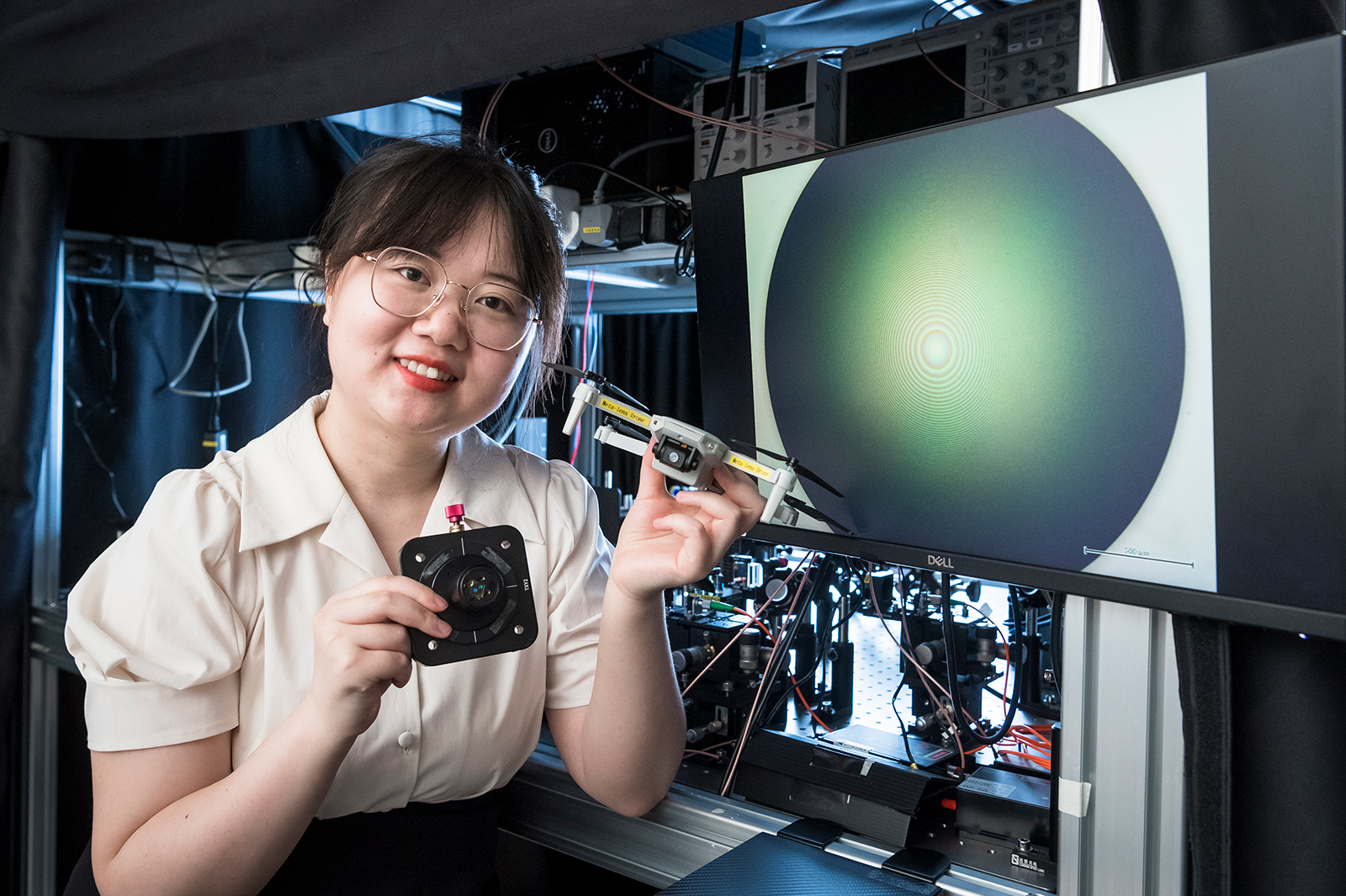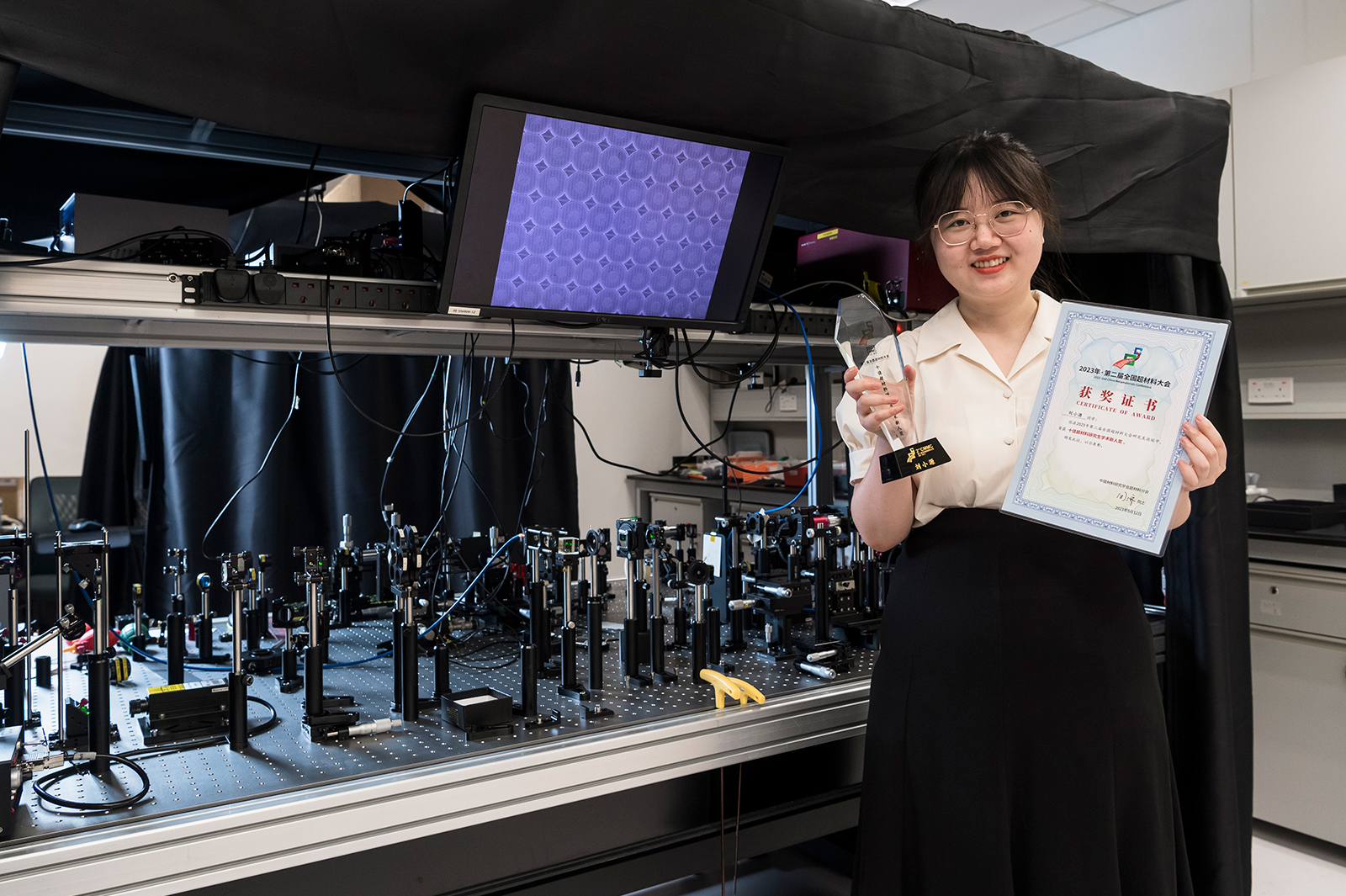Enhancing aerial, land, and underwater photography with CityU research student’s award-winning meta-lens

A PhD student at City University of Hong Kong beat over 300 candidates and won the Top Ten Academic Youth Award for Metamaterial Postgraduate.
Liu Xiaoyuan, a research student in the Department of Electrical Engineering (EE), developed a series of novel meta-devices that provides lighter and more flexible solutions for aerial, land, and underwater application scenarios.
Liu reported her findings on meta-lens for aerial, land, and underwater imaging at the 2nd China Metamaterials Conference held in May.
Meta-lenses are advanced optical devices composed of artificial nano-antenna arrays that offer various potential usages for new demands. Traditional optical imaging systems usually consist of a group of lenses to correct spherical or chromatic aberration, which are bulky. When using more than one camera, there will be a set of complex data transformations to calibrate the whole imaging system. Meta-lenses are lightweight, customisable, and more flexible to match various scientific and technical application scenarios than the traditional optical lens, especially in space-constrained and fragile environments, such as drones, autonomous driving, and micro-submarines.
For aerial photography with the drone, Liu Xiaoyuan’s meta-lens is integrated with a complementary metal-oxide-semiconductor (CMOS) sensor for drone photography, a smaller and lighter lens that can push forward drone photography technology by prolonging flight time.
“To our knowledge, this is the first meta-lens device operated by a drone. It can reduce the weight burden for prolonging flight time,” said Xiaoyuan.
“As the weight of the drone is inversely proportional to the flight time, which will affect aerial photography operation, the weight reduction of the imaging and sensing devices of the drone is an urgent issue,” she said.
Xiaoyuan and the team have designed and fabricated a polarisation-independent gallium nitride (GaN) meta-lens with a 2.6 mm diameter and 5.03 mm focal length. The optical properties of phase and transmittance can be changed by tuning the various size of the nano-antennas. The meta-lens can obtain the needed focal length according to the arrangement of different phases under the same thickness.
Due to the limited and specific light field information obtained by single-lens imaging, an intelligent and compact depth-sensing meta-device is proposed for autonomous land driving. With the support of deep learning, the array of 3600 achromatic meta-lenses integrates the functions of light field imaging and structured light imaging, which is suitable for different scenes at all light levels.
For the exploration of the aquatic environment, a pair of GaN binocular meta-lenses have been specially designed and fabricated by Xiaoyuan and her team to demonstrate underwater stereo vision and depth sensing. She developed the generalised depth calculation formula for all-sized binocular vision systems. With deep-learning support, this stereo vision system can realise the fast-underwater object’s depth and image computation for real-time processing capability.
“Our binocular meta-lens is compact enough for working in a cramped and harsh aquatic environment. The system consists of a filter, binocular meta-lens, and a CMOS sensor. With captured images of a tube and multiple fish, the disparity imaging data are extracted through the matching algorithm,” said Xiaoyuan.
The research has been supervised by Professor Tsai Din-Ping and Professor Chen Mu-Ku from EE.

